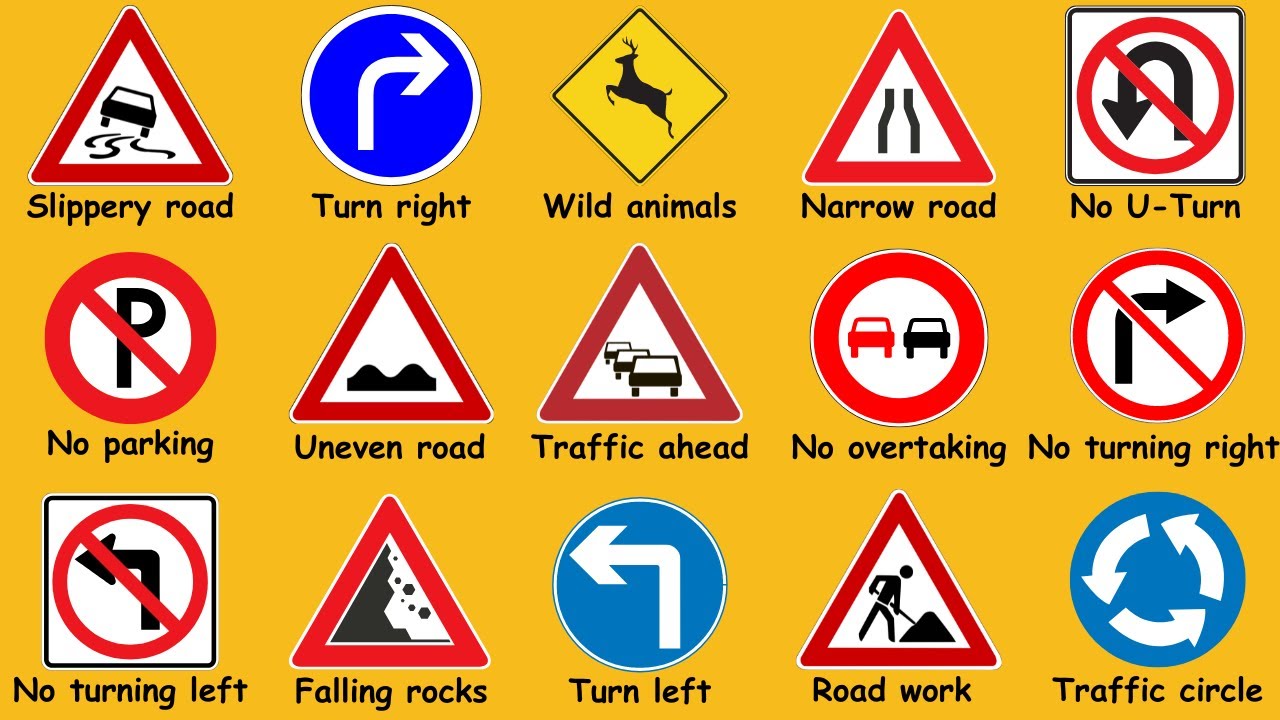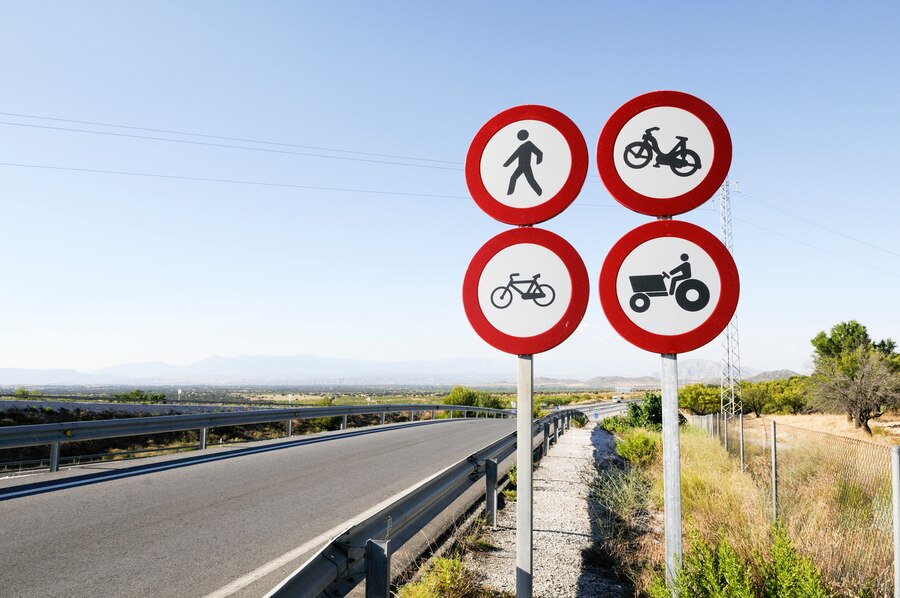Every road user, including motorcyclists, must have a solid understanding of road signs and markings to ensure safe and responsible navigation on the streets. Road signs and markings serve as a universal language, conveying essential information and regulations to drivers. In the context of the motorcycle theory test, the significance of road signs and markings cannot be overstated. This comprehensive guide delves into the role of road signs and markings in the motorcycle theory test, discussing their importance, types, and key concepts, and offering valuable tips to help you succeed.
The Significance of Road Signs and Markings
Road Safety
Road signs and markings are fundamental to road safety. They provide critical information, warning of potential hazards, directing traffic, and specifying speed limits. An understanding of these signs is essential for motorcyclists to make informed and safe decisions while on the road.
Legal Compliance
Ignoring road signs and markings can result in traffic violations and, in some cases, lead to accidents. To ride responsibly and legally, motorcyclists must recognize and adhere to the messages conveyed by these signs and markings.
Types of Road Signs

Regulatory Signs
Regulatory signs inform road users about laws and regulations that must be followed. Common examples include stop signs, yield signs, and speed limit signs. Motorcyclists should be familiar with these signs to obey traffic rules.
Warning Signs
Warning signs alert road users to potential dangers ahead. These signs are critical for safety, as they signal hazards such as sharp curves, intersections, and pedestrian crossings. Motorcyclists must react promptly to these signs to avoid accidents.
Informational Signs
Informational signs provide essential information about services, facilities, and directions. Understanding these signs is particularly valuable for motorcycle riders who may need to locate gas stations, rest areas, or specific destinations during their journeys.
Directional Signs
Directional signs guide road users to specific locations, including cities, highways, and landmarks. For motorcyclists navigating unfamiliar areas, these signs are invaluable for staying on course.
Also Read: How to Choose Electric Bike Tires
Types of Road Markings
Lane Markings
Lane markings on the road indicate the boundaries of each lane, helping motorcyclists maintain their position and stay within their designated lanes. Understanding these markings is vital for safe lane changes and turns.
Crosswalks
Crosswalk markings are crucial for pedestrian safety. Motorcyclists must recognize and respect these markings to yield to pedestrians at intersections and crosswalks.
Stop Lines
Stop lines are typically marked on the road to indicate where vehicles, including motorcycles, must come to a complete stop at stop signs and traffic signals. Observing these lines is essential for safe intersection navigation.
Key Concepts and Interpretations

Understanding Colors
Road signs often use specific colors to convey meaning
Red: Stop or prohibition.
Yellow: Warning.
Blue: Information or service.
Green: Direction guidance.
White: Regulatory information.
Understanding these color codes is essential for correctly interpreting the signs.
Shape Recognition
The shape of a road sign also carries significance:
Octagon: Stop sign.
Triangle: Yield sign.
Rectangle: Regulatory signs.
Diamond: Warning signs.
Circle: Railroad crossing ahead.
Recognizing the shapes of signs can quickly convey their purpose to motorcyclists.
Comprehending Icons and Symbols
Many road signs use icons and symbols to convey messages without words. Familiarity with these symbols is vital for quick and accurate interpretation.
Also Read: KTM 200 Duke 2023: A Powerful and Stylish Motorcycle
Tips for Success in the Motorcycle Theory Test
Study Thoroughly
To excel in the motorcycle theory test practice 2023, dedicate ample time to studying road signs and markings. Utilize official materials and practice tests to reinforce your knowledge.
Use Visual Aids
Visual aids such as flashcards and reference charts can enhance your ability to memorize and recognize signs, colors, and shapes.
Take Practice Tests
Take advantage of practice tests that simulate the real exam experience. These tests help you assess your knowledge and readiness.
Stay Updated
Be aware of any changes or updates to road signs and markings that may affect the test. Stay informed about any revisions to road regulations in your region.
Conclusion
The motorcycle theory test is a fundamental step on the path to becoming a licensed and responsible motorcycle rider. A comprehensive understanding of road signs and markings is a key component of this test, and it is equally crucial for safe riding in realworld scenarios. Road signs and markings convey vital information about regulations, warnings, and directions, ensuring road safety and legal compliance.
By recognizing the significance of road signs and markings, understanding their types and interpretations, and employing effective study techniques, you can confidently approach the motorcycle theory test. A solid knowledge of road signs and markings will not only help you succeed in the test but also contribute to your safety and the safety of others as you embark on your motorcycle riding journey.

Techspurblog is a blog dedicated to providing industry-leading insights, tips, tricks and tools on topics such as web design, app development, Digital Marketing, Education, Business and more. We also provide reviews of the latest tech products and services that can help you get the most out of your business.





